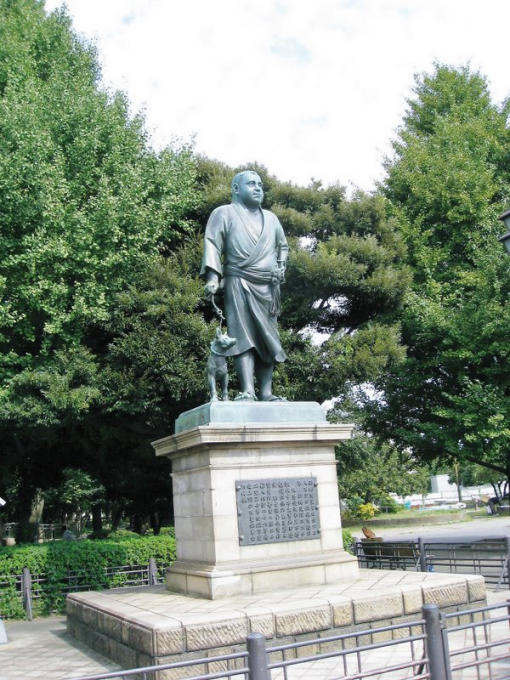Saigo Takamori Statue
Saigo Takamori is considered one of the great heroes of Japanese history. Originally from Satsuma domain in Kyushu, one of the most important domains to lead the Meiji Restoration of 1868, Saigo played a key role in overthrowing the Tokugawa shogunate. an event many consider a watershed moment in Japanese history. (This event and its significance is described in James Huffman's essay, The Meiji Restoration Era, 1868-1889.) Saigo, one of the leaders in overthrowing the Tokugawa government, played a lesser role in the new government that many of the other leaders of the Meiji Restoration. In particular, he advocated an aggressive foreign policy that many others deemed both unrealistic and unwise. Finally, in 1877, frustrated with what he considered the weakness of the new government and the lack of spirit, Saigo led a rebellion against the government, knowing he would lose and that it would result in his death. The combination of his role in the futile Satsuma Rebellion of 1877 as well as the important role he played in the Meiji Restoration have made him something of a hero in Japan. The statue pictured here, photographed in October 2007, is in Ueno Park in Tokyo, and serves as an important landmark that Tokyoites use as a meeting point. For an excellent essay on Saigo Takamori in the Japanese imagination, see Ivan Morris' The Nobility of Failure.


